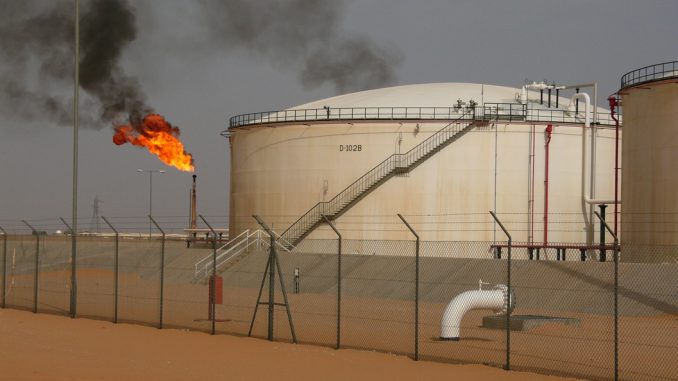
Libya was once one of the world’s leading producer of oil, pumping 1.6 million barrels per day. After 11 years of civil war and neglect towards the country’s pipeline structure, that figure is now at just 90,000 in 2020.
The 94% reduction in oil production could have been even worse without the efforts of the state-run National Oil Corp. Despite a decade of turmoil in which thousands have been killed since the ousting of strongman Prime Minister Muammar al-Gaddafi in 2011, the NOC has done its best to keep the oil taps on in Libya.
Oil facilities have become crucial battlefields in the civil war. Whenever the NOC regain access to an oil field that has been shutdown due to fighting or taken out of their control, it is their job to restore the facility to full working order as quickly as possible so that production can resume.
Restarting production is becoming increasingly difficult, however. Libya is divided between Fayez al-Sarraj’s United Nations-recognised government based in Tripoli in the west of the country and the administration of General Khalifa Haftar in the east.
Libya has Africa’s biggest crude oil reserves but problematically, the ‘oil crescent’ in which most of the country’s major ports are located is under the control of General Haftar, who has held the crucial city of Sirte since June 2019.
General Haftar’s supporters have regularly prevented ports such as Es Sider, Ras Lanuf, Marsa el Brega and Zuetina from exporting, as well as shutting oil fields in the Sirte Basin.
Preventing oil production is seen as a tool to hurt the Libyan economy by General Haftar to put pressure on the government in Tripoli. General Haftar meanwhile believes it to be justified due to what he peceives as the unfair distribution of oil money.
Libya receives all its oil revenue via the central back in Tripoli before redistributing to the regions. General Haftar does not feel that the historically marganlisied east of the country is given a fair share, despite it being home to a significant proportion of Libya’s oil reserves and those four major export terminals.
Rebels have also closed the Sharara oil field in the south west of Libya, the country’s largest with estimated reserves of 3 billion barrels and the capacity to produce 300,000 barrels a day.
While the closure of oil fields prevents production in the short-term – the NOC believes that $6 billion has been lost in revenue since January – it is the long-term effects of denying the NOC access to infrastructure that could be catastrophic for Libya’s future.
The NOC have reported that a pipeline collapsed at Sharara due to engineers being denied access the site to inject chemicals to prevent corrosion. A tank capable of holding 16,000 barrels has also collapsed as the result of corrosion.
Oil exporter Harouge Oil Operations says that its facilities have suffered over 80 leaks due to corrosion. Again, engineers were unable to access facilities to carry out emergency pipe repair.
The NOC believes that maintenance and repair work at oil wells alone could cost in excess of $100 million. That figure continues to rise all the time that systems are left to fall into further disrepair.
NOC chairman Mustafa Sanalla was questioned on the issue of Libya’s creaking pipeline infrastructure, issuing a stark written warning about delaying the required repairs, maintenance and upgrades – particularly to those fields in the east and the export terminals in the oil crescent.
“The longer we wait, the greater the damage and the higher the cost,” said Sanalla. “It is a tragedy for the people of Libya that political game-playing has been allowed to cause such damage to our country’s critical national infrastructure.”
Without urgent improvements to oil facilities and pipelines, the civil war in Libya could end tomorrow and the country’s oil industry would still need millions of dollars and a significant period of time to return to pre-2011 levels of production.

Leave a Reply